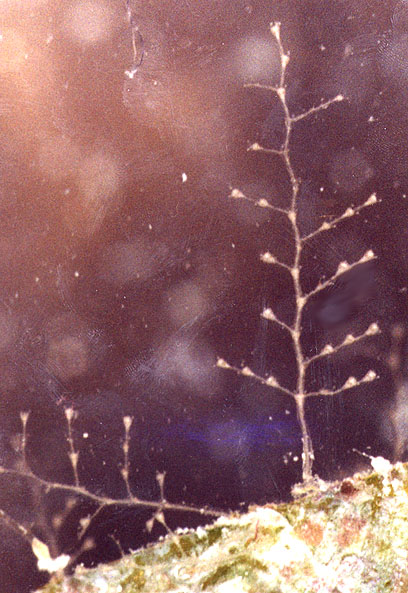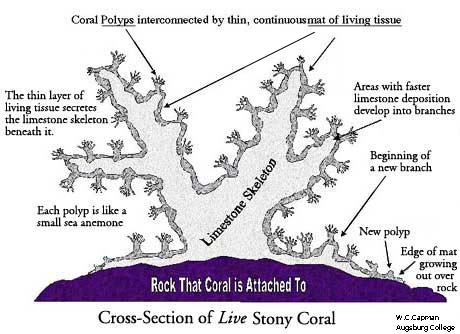| A polyp |
Upside-down polp |
Upside-down polyp stretched - looks like a medusa (e.g. a jellyfish) |
Many of the cnidarians alternate between the polyp body form and the medusa form.

| A polyp |
Upside-down polp |
Upside-down polyp stretched - looks like a medusa (e.g. a jellyfish) |
Many of the cnidarians alternate between the polyp body form and the medusa form.

(Based on similar diagram in: Delbeek, J. C, and Sprung, J., 1994. The Reef Aquarium, vol 1. Ricordea Publishing, USA.)
The importance of stony corals
Stony coral structure and colony development
